Content
The slogan about rabbits that walked in the Soviet Union, "rabbits are not only warm fur, but also 4 kg of dietary meat" is still remembered. And earlier, rabbits were really a profitable occupation of summer residents, who kept animals on the land plots issued to them by the state, without knowing the hassle. Rabbits could be bred in almost any quantity without worrying about protection from disease. The main thing is that the neighbors in the dacha cooperative do not write slander.
A rabbit breeder's paradise lasted until 1984, when an RNA virus first appeared in China, causing an incurable disease in rabbits. Moreover, it is a disease that is difficult to defend against, since the course of the disease is usually lightning fast.
Due to the fact that the quarantine barrier for the virus was not put on time and the Chinese rabbit meat got to Italy, the virus began to spread from China around the world, and viral hemorrhagic rabbit disease began its victorious march.
The problem of counteracting the disease was aggravated by the fact that often outwardly rabbits were absolutely healthy until the last minutes of their lives, when they suddenly began to scream, fell, made agonizing movements and died.
In fact, the rabbits had been ill with HBV for at least 2 days, during which they managed to infect the virus to neighboring healthy animals.
In addition, at first, the owners did not suspect that the virus could persist even in the skins, which at that time were often exchanged for compound feed. Since often the compound feed for rabbits and the skins of slaughtered animals were stored in the same room, the feed also turned out to be infected with the virus. This helped the virus to conquer new territories.
The virus entered the Soviet Union from two directions at once: from the west, from where European rabbit meat was purchased, and to the Far East directly from China through customs points on the Amur.
Thus, in the former USSR there is no region left free from rabbit hemorrhagic disease.
Today, two viruses: VGBK, together with myxomatosis, are literally the scourge of rabbit breeders all over the world, except Australia, which do not allow rabbits to be raised even to slaughter weight.
A rabbit of any age can get sick with HBV, but the disease is especially dangerous for rabbits at the age of 2-3 months, the mortality rate from HBV among which reaches 100%.
The HBV virus is quite stable in the external environment and can withstand relatively high temperatures. At 60 ° C, the virus dies only after 10 minutes, so it is impossible to "warm up" the rabbit so as to kill the virus. The animal will die earlier. Although many less resistant viruses die already at a temperature of 42 °, which a living organism is able to withstand. The very "fever" during illness is the body's fight against the virus.
In the skins of sick rabbits, the virus persists for up to 3 months.
Ways of infection with HBV virus
With good resistance of the virus of this disease in the external environment, you can bring it to your rabbits by simply visiting a breeder friend who decided to show off a new rabbit. The virus is perfectly transmitted by clothing, shoes or on car wheels. Not to mention the hands, which are almost impossible to disinfect properly.
The main sources of infection are feed, manure from sick animals, litter, water and soil contaminated with the secretions of sick rabbits. Fluff and skins are also sources of the virus.
But even if the farm is located in the wilderness, there is no guarantee that rabbits will be able to avoid getting hemorrhagic disease. In addition to the sources already mentioned, the virus can be transmitted by blood-sucking insects, rodents and birds. Themselves remaining immune to disease.
Symptoms of HBV disease
The incubation period for the virus ranges from several hours to 3 days. There are no four forms of HBV that are standard for other diseases. This disease has only 2 forms of the course of the disease: hyperacute and acute.
When super sharp, the rabbit looks perfectly healthy. The animal has a normal temperature, normal behavior and appetite. Until the moment when he falls to the ground in convulsions.
In the acute form in the animal, you can notice signs of depression, disorders of the central nervous system, sometimes before death, the rabbit has blood from the mouth, anus and nose. Moreover, the blood from the nose can be mixed with mucopurulent secretions. Only nosebleed may appear. Maybe nothing will appear at all.
Therefore, if the rabbit suddenly "out of the blue" took and died, it is necessary to give the animal's corpse to the laboratory for research.
Diagnosis of the disease
An accurate diagnosis is made on the basis of anamnesis and postmortem examinations. At autopsy, a rabbit that has died from VGBK has hemorrhages in its internal organs. In addition, virological studies are also carried out.
An autopsy shows that the cause of the death of the rabbit was pulmonary edema. But the virus begins to develop in the liver, leading to irreversible changes in it by the time the animal dies. In fact, after the death of a rabbit, the liver resembles a rotten rag that breaks easily at hand. The liver is yellow-brown in color and enlarged.
The photo shows changes in the liver and lungs.
The heart is enlarged, flabby. The kidneys are red-brown in color with punctate hemorrhages. The spleen is dark cherry, swollen, enlarged from 1.5 to 3 times. The gastrointestinal tract is inflamed.
Laboratory studies are needed to separate IBHC from viral respiratory diseases, pasteurellosis, staphylococcosis, and poisoning.
The latter is especially true since some poisonous plants also lead to rapid death. And many plants are so poisonous that you might not notice a small piece of poison in the hay for a rabbit.
Prevention and treatment of HBV
In the event of an outbreak of VGBK, only quarantine measures are possible. No treatment is carried out, since there is no medication for the virus. In the event of a disease outbreak, all sick and suspicious rabbits are slaughtered and burned.
Another thing is that the owners, who saw what is happening inside the sick animal, are unlikely to eat this meat.
The remaining healthy rabbits are vaccinated. In the absence of a vaccine, all livestock on the farm are slaughtered. The farm is considered safe only 15 days after the last death of the rabbit and after all sanitary procedures, the slaughter of sick rabbits and the vaccination of healthy ones.
Types of vaccine and vaccination schedule against the disease
To create immunity against HBV in Russia, 6 variants of vaccines are produced, at least two of which are bivalent: against myxomatosis and HBV and against pasteurellosis and HBV. Previously, with a less rich choice, a vaccination scheme was in effect, in which the first time the vaccine was injected into rabbits at the age of 1.5 months. The next time the vaccine was pierced 3 months after the first vaccination. The third and all subsequent vaccinations were carried out every six months.
Today we need to focus on the instructions for the vaccine.
And sometimes it happens that animals get sick immediately after vaccination.The last case suggests that the rabbits were already sick, they just had time to vaccinate just during the incubation period of the disease.
Veterinary stations recommend vaccinating rabbits at 1.5 months, but it happens that the cubs begin to die as early as a month. To prevent such cases, the rabbit vaccination schedule must be strictly observed. Cubs from vaccinated queens have passive immunity up to 2 months.
In the event of a “breakdown” of the vaccine by the virus, all sick and suspicious rabbits will have to be killed, and conditionally healthy animals should be injected with serum against IBHC. This is not a vaccine, this is a drug that stimulates immunity and has a preventive effect for up to 30 days. Not the fact that it will help, but will not make it worse.
How and how to disinfect
With VGBK, after the destruction of sick animals, they carry out a complete disinfection of not only the equipment and clothing of the personnel, but also all the equipment of the farm, including cages, drinkers and feeders. And also the structure itself.
Disinfection is carried out with ordinary disinfectants from the most available: chlorine, phenol, formalin and others. Also, a blowtorch or gas torch is often used to burn out microorganisms. But if you remember that a virus at 60 ° C takes 10 minutes to die, it is easy to guess that either the blowtorch will be ineffective, or by that time everything except the metal parts will burn out.
More effective disinfectants are available today to help fight the virus. You can watch the video for disinfection methods and preparation for vaccination against HBV.
Rabbit vaccination schedule, reliable protection against death
Litter, manure and contaminated feed are burned.
On forums and sites, you can often find questions "is it possible to leave a rabbit who survived after an outbreak of VGBK" or "is it possible to treat VGBK with folk remedies." People are sorry, of course, to lose all the animals on their farm, but in both cases the answer is no. The surviving rabbit becomes a carrier of the infection. Newly purchased rabbits will very quickly become infected with the virus and die.
Outcomes
If a virus of this disease has visited the farm, the best option would be to slaughter all the available livestock and thoroughly disinfect the equipment, sparing no effort or time.
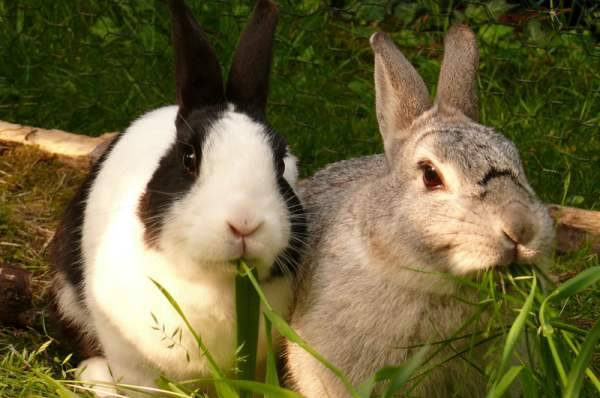
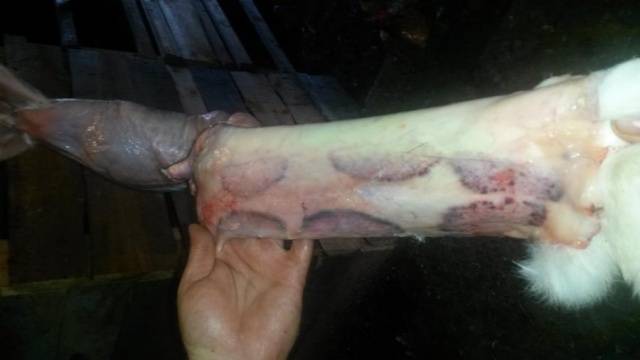
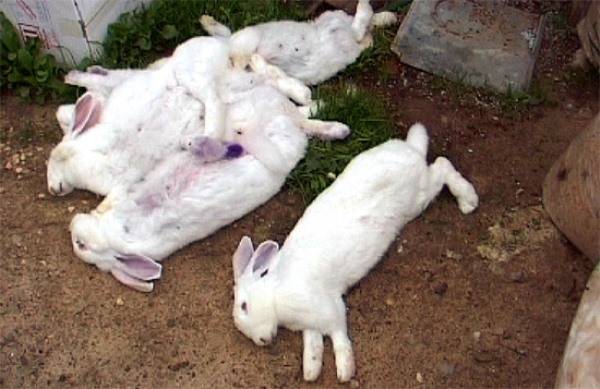
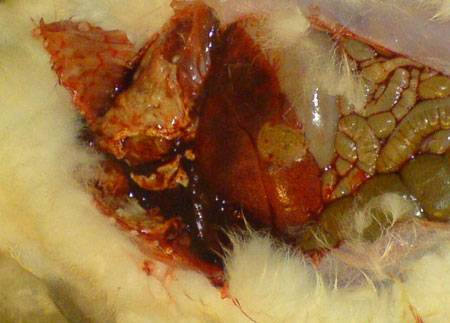
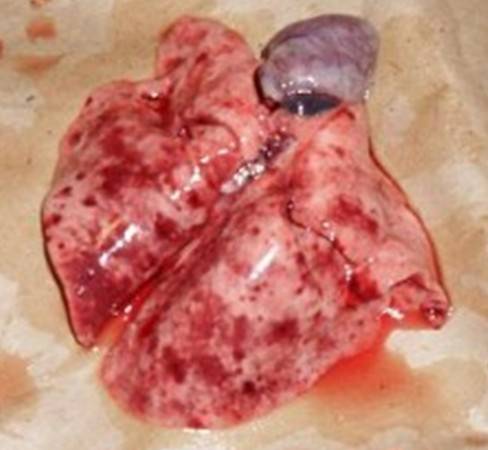












The article was interesting and informative for me!
I am a beginner rabbit breeder. I have three female mums and a male. Thanks for the article, I found answers to many of my questions.